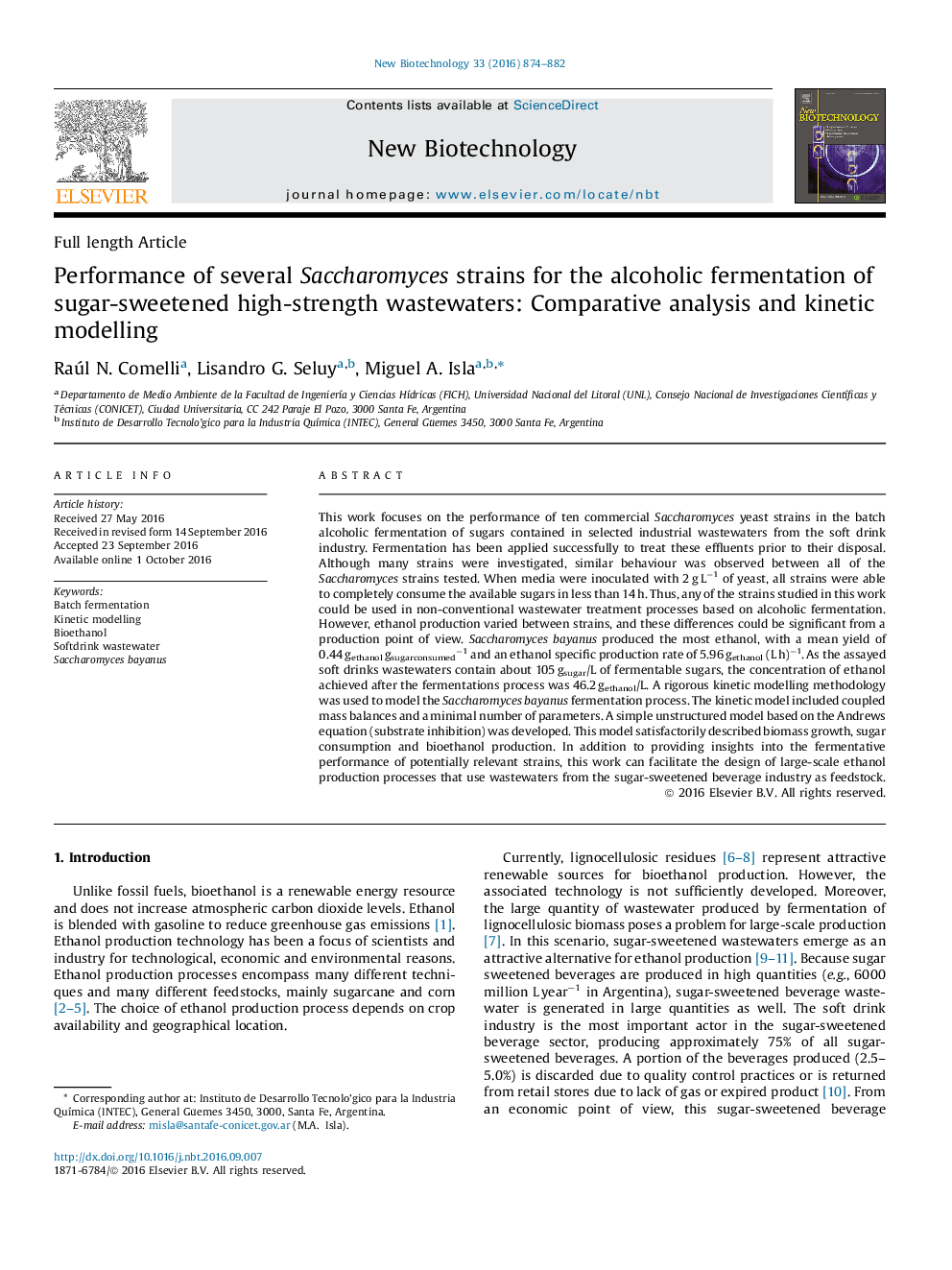| کد مقاله | کد نشریه | سال انتشار | مقاله انگلیسی | نسخه تمام متن |
|---|---|---|---|---|
| 6452892 | 44948 | 2016 | 9 صفحه PDF | دانلود رایگان |

- Ten commercial Saccharomyces strains were evaluated in batch alcoholic fermentations of soft drinks wastewaters.
- When media were inoculated with 2 g Lâ1 of yeast, all strains were able to completely consume the available sugars in fewer than 14 h.
- S. bayanus was the best ethanol producer with ethanol yield of 0.44Â gethanol/gsugar.
- A rigorous kinetic modeling methodology was applied.
- The developed methodology could be applied to other strains and other media containing sugars.
This work focuses on the performance of ten commercial Saccharomyces yeast strains in the batch alcoholic fermentation of sugars contained in selected industrial wastewaters from the soft drink industry. Fermentation has been applied successfully to treat these effluents prior to their disposal. Although many strains were investigated, similar behaviour was observed between all of the Saccharomyces strains tested. When media were inoculated with 2 g Lâ1 of yeast, all strains were able to completely consume the available sugars in less than 14 h. Thus, any of the strains studied in this work could be used in non-conventional wastewater treatment processes based on alcoholic fermentation. However, ethanol production varied between strains, and these differences could be significant from a production point of view. Saccharomyces bayanus produced the most ethanol, with a mean yield of 0.44 gethanol gsugarconsumedâ1 and an ethanol specific production rate of 5.96 gethanol (L h)â1. As the assayed soft drinks wastewaters contain about 105 gsugar/L of fermentable sugars, the concentration of ethanol achieved after the fermentations process was 46.2 gethanol/L. A rigorous kinetic modelling methodology was used to model the Saccharomyces bayanus fermentation process. The kinetic model included coupled mass balances and a minimal number of parameters. A simple unstructured model based on the Andrews equation (substrate inhibition) was developed. This model satisfactorily described biomass growth, sugar consumption and bioethanol production. In addition to providing insights into the fermentative performance of potentially relevant strains, this work can facilitate the design of large-scale ethanol production processes that use wastewaters from the sugar-sweetened beverage industry as feedstock.
Journal: New Biotechnology - Volume 33, Issue 6, 25 December 2016, Pages 874-882